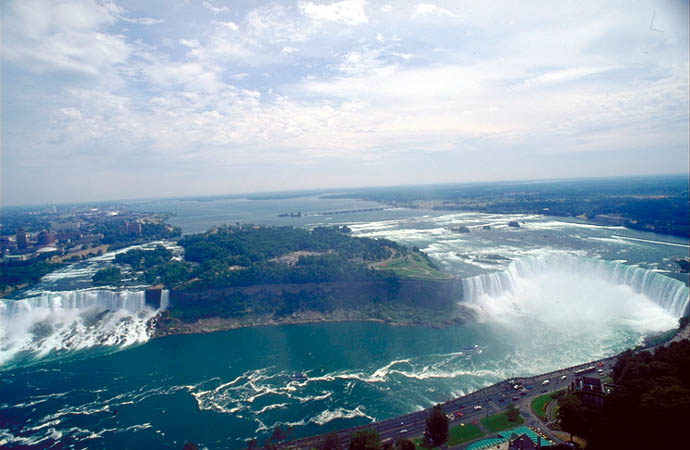
 Copyright © Michael Richmond.
This work is licensed under a Creative Commons License.
Copyright © Michael Richmond.
This work is licensed under a Creative Commons License.
The Niagara River flows over steep cliffs in two cataracts we call Niagara Falls.

On the left is the "American Falls", and on the right, the "Canadian" or "Horseshoe Falls". Some information about each:
Falls Height Liters per second ------------------------------------------------ American 54 m 600,000 Canadian 51 m 2,400,000 ------------------------------------------------
Starting over one hundred years ago, power companies have used water in the Niagara River to generate electricity. Strangely enough, they don't touch the water which goes over the falls. Instead, about a mile above the falls, much of the river is diverted into pipes which lead it downwards to the generating stations.
Once the water reaches the stations, it is sent into huge turbines. Below is a picture of one such turbine. Water flows from the pipe on the right side of the diagram into the circular casing at the center:
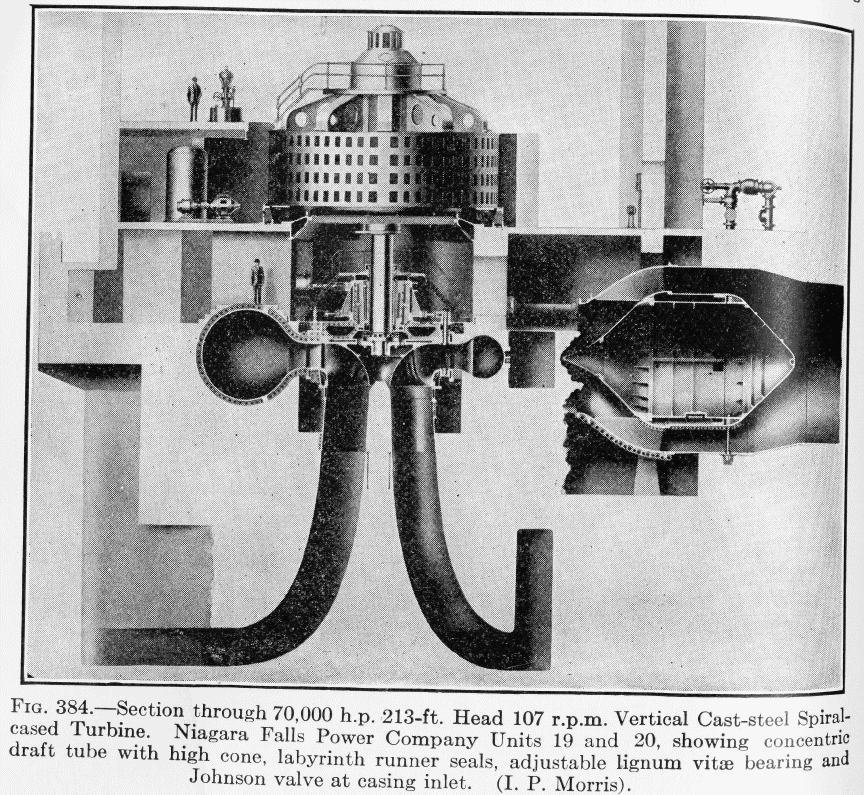
Here's a picture of the casing by itself. Note how large it is! The diameter of the tube is about 10.5 feet at the intake end.
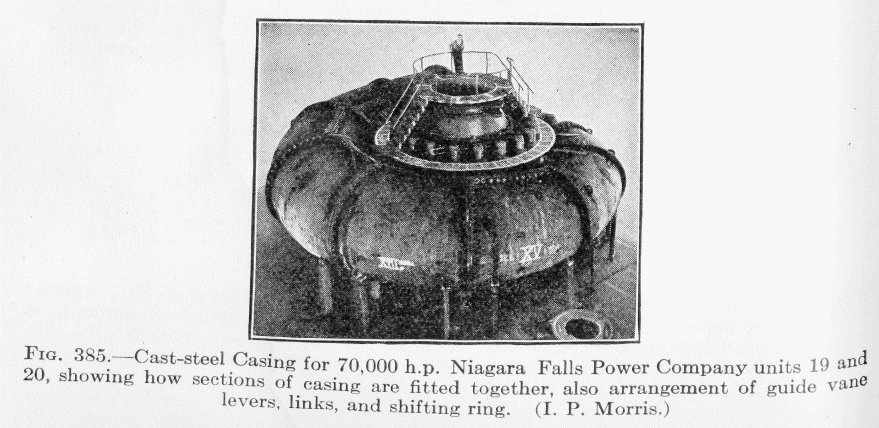
Each turbine contains a giant waterwheel attached to a shaft; as the water rushes through, it spins the wheel, the shaft, and all the equipment attached to the shaft. The top of the shaft sits inside a cylindrical housing, shown at the top of the diagram below.
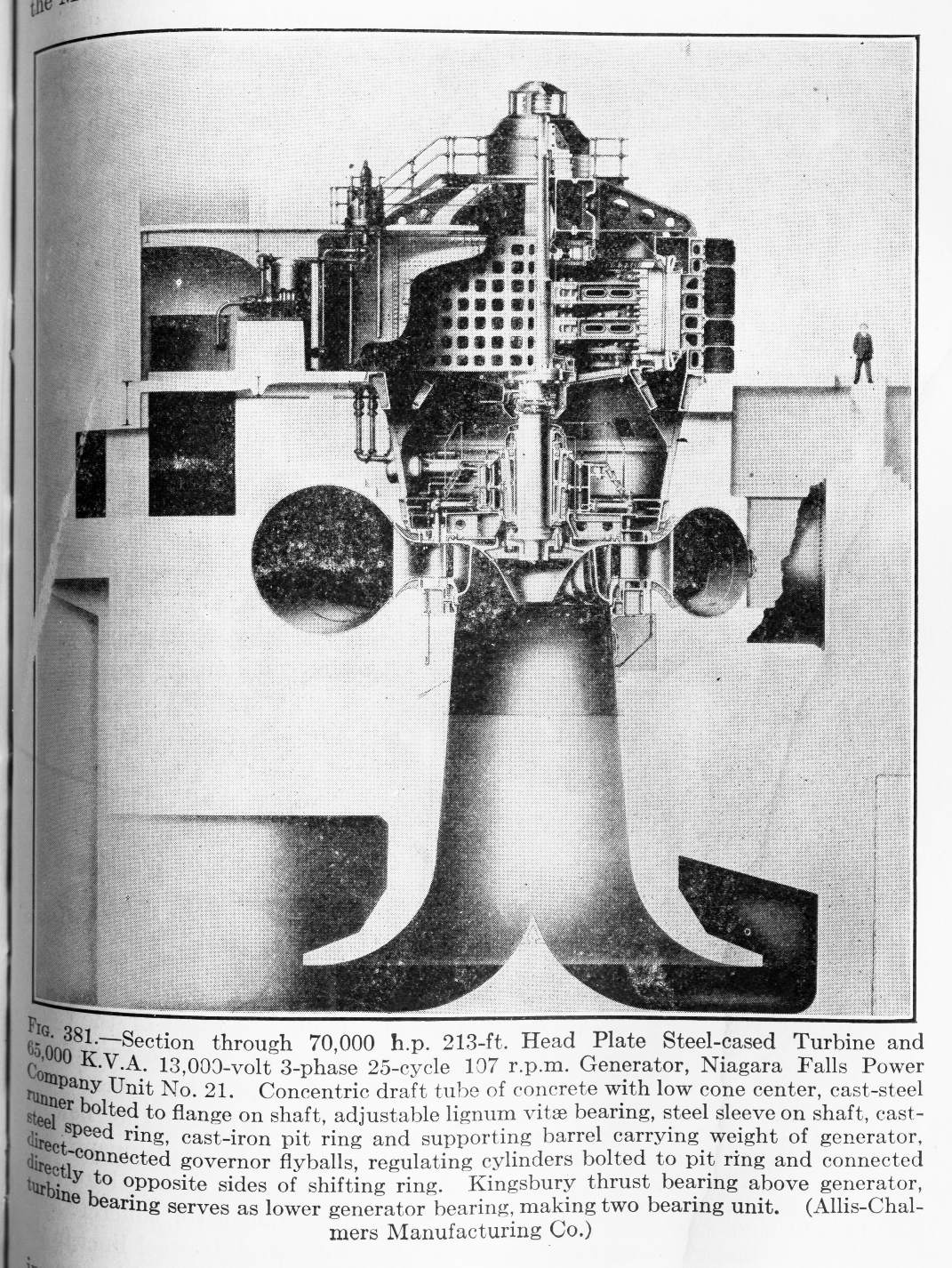
A set of twelve very large magnets fixed in a circular housing is attached to the shaft. Each magnet provides a field of around 0.1 Tesla.
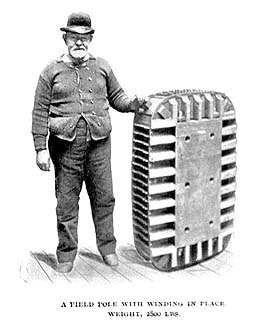

The magnets spin around inside a big coil of wire, which is in turn set within giant cylindrical covers. The wire turns many times around a frame which is very roughly a square 3 meters on a side; thus, an area of about 9 square meters. The power plant contains a number of these generators.
As the caption of the picture above indicates,

each generator produces 13,000 volts (RMS). The shaft turns at 107 revolutions per minute, but has 6 North/South/North sets of magnets; thus, the magnetic flux due to the magnets will oscillate 642 times each minute. The output of each generator is about 70,000 horsepower. (Today's power stations produce about 2 GW GigaWatts for Canada and about 2.4 GW for the US).
Now, can you answer the following questions?
Some electricity questions:
 Copyright © Michael Richmond.
This work is licensed under a Creative Commons License.
Copyright © Michael Richmond.
This work is licensed under a Creative Commons License.